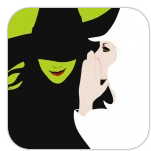Pokémon GO shows that synergy between branding, social trends, and game experimentation matters more in 2016 than ever before.
Just What is Pokemon GO?
Many of you have heard of Pokémon GO by this point and are probably trying to crack how to evolve your Pokémon or beat your local Pokémon gym as we speak. But in case you missed out on the hype here’s a quick primer (also which rock were you living under and did you check it for Poliwags?)
Pokémon GO is an augmented reality (AR) game developed by Nintendo and Niantic. It reinvents geocaching by making you go out into the real world to catch the original cast of 145 Pokémon (you can’t catch the three legendary birds, Mewtwo, Mew, or Ditto.) The game uses your phone’s GPS locator and camera lens to deftly integrate Pokémon animations onto your phone screen. Your phone will regularly alert you, as you travel in the real world, whenever an opportunity to toss a Pokéball at a sought-after Pokémon presents itself. As you level up, you’ll be able to conquer gyms, hatch Pokémon eggs, and evolve your beloved pocket monsters. Players also have the option to accelerate their progress by purchasing in-game items and services from Niantic but Pokemon GO is primarily free-to-play.

Geocaching, AR, RPGs, CCGs — none of these elements alone are revelatory and all have been around for over a decade. Together, though, they are revolutionizing mobile gaming and are altering the way we interact with the physical environment.
This isn’t hyperbole either. Barely a week has passed since Pokémon GO’s limited release and the game is already well on its way to claim a spot as one of the Elite Four mobile games in mobile application history. And that in a year full of grim projections for the mobile gaming market. Since July 5th, Nintendo’s market value has increased by 25% and here’s how the game ranks already:
- Surpasses Tinder in installations
- Tops Twitter and Facebook in “Daily Active Users”
- Longest “Time Spent in App” beating out Twitter, Facebook, Snapchat, and Instagram
- Top downloaded app in iTunes and Google Play store
- Occupies two-out-of-four of the most searched “How to’s” on Google

Know Your Brand and Tap into Social Trends
So, how does a brand that’s been around since 1995 combine augmented reality (the first instance of an AR video game debuted for Androids in 2008) and geocaching (2000) absolutely crush mobile app records in 2016? The key is “timing.”
Nintendo is a gaming powerhouse and certainly no stranger to game iterations (with a whoppin’ 24 gaming adaptations of the original Red, Blue, and Green versions.) In fact, they’re so good at branding, that Pokémon holds the title of the second highest-selling game franchise in history (Mario still clings to the top spot) and they’ve been able to generate frenzied interest for every Pokémon game release over the last 20 years.
Why launch yet another Pokémon game now?
It’s about analyzing social trends and realizing that now, more than ever, people are likely to view both hype and nostalgia with equal excitement. Let’s take a peek into the mind of Nintendo:
- 91% of kids (2-17) play games
- 63% of those kids prefer to game on mobile devices rather than consoles
- 90% of Millennials ages 18-29 use social media on their phones
- “Nostalgia marketing”, targeted at millennials, is at peak popularity
- Fun fact: Pikachu is the most recognized cartoon character of the 21st century, second only to Mickey Mouse (who almost has a century head-start)
From this, it makes sense why Nintendo would launch Pokémon GO now and as its first mobile game ever. The game is filled with enough nuances for the 10-year-old, who just wants to play with his friends, as it is for a 25-year-old, who hunted for Pokémon in the wee hours of the night by the glow of his hand-held Gameboy. Nintendo synergized a formula equally potent in FOMO hype as it was in heartfelt nostalgia and everyone has fallen in love with the game, whether it be again or at first sight.
But Don’t Be Scared to Experiment!
People use mobile apps on the move but how do you get someone up and moving to use an app?
Player 2 has just joined the game: Niantec, a software development company known for their work on Google Maps, is responsible for developing the world’s biggest AR/geocaching success story prior to Pokémon GO.
Before Pokémon GO, Niantic found that success with Ingress, another AR-enhanced location-based mobile game that focuses on two factions claiming respective territories. There is considerable overlap between the games, including Pokéstops (called portals in Ingress) at prominent landmarks, so it’s safe to conclude that Niantic was simply leveraging existing game mechanics while raising the incentive with the irresistible appeal of Pokémon.
Again, neither AR or geocaching are new elements but individually they just hadn’t caught on with current audiences until now. The winning formula is in introducing emerging technology (AR) to a wide audience in a friendly manner (Pokémon) and tie it to a wholesome, IRL form of social activity (geocaching). Simple, right? More like researched. Pokémon GO proves that you don’t need a revolutionary idea, just a synergetic formula that’s been tested through experimentation and executed with perfect, social timing.
Cachin’ In
Nintendo and Niantic have already created a game as addictive as it is historic and many would do well to study their method. Aside from its marketing success and continuing growth potential (yes, there are still features such as trading and the other 577 Pokémon that Nintendo hasn’t released that are likely to drive demand to new and more frenzied levels), Pokémon GO has had a tremendous effect on how we view the social terrain, both physical and augmented.

Pokémon has always been innately communal, from trading cards to trading in-game, and that persists through this game as players meet up to train together and live out their childhood dreams. Now this communal aspect has spilled into the “real world”. Public spaces previously left deserted are now filled with kids and adults walking around while playing the game. Although it’s too early to say, we have already seen hints Pokemon GO redefining urban planning; views of what constitutes a place as shared, safe, and fun are already being augmented.
Last year, the question of mobile app performance left the industry uncertain of its future. Today, Pokemon GO’s virality reinvigorated interest in the mobile market and did so by formulating a product in light of current social trends and emerging technologies.


































